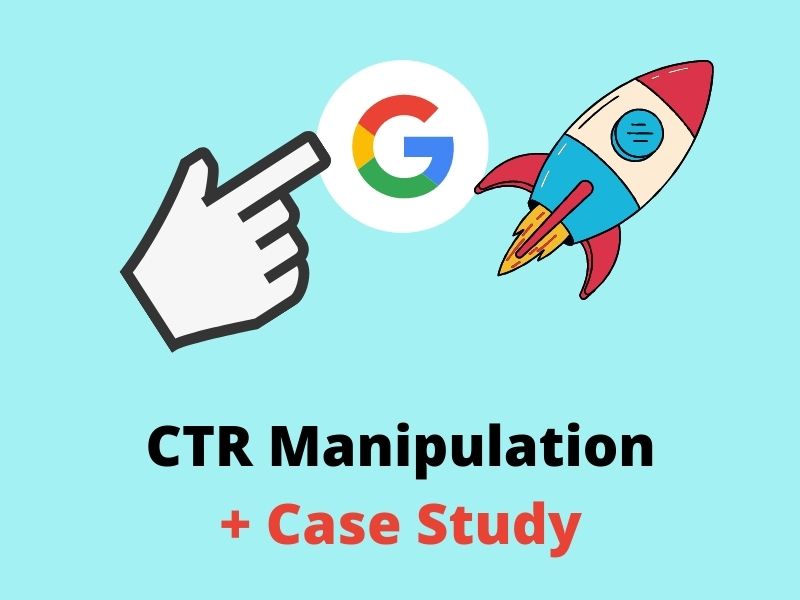CTR Control: A Video Game Changer for Digital Campaigns
The rise of CTR control has without a doubt transformed digital advertising techniques, providing marketers with devices to improve engagement and drive website traffic efficiently. What ramifications might this stabilizing act hold for the future of digital projects?
Understanding CTR Adjustment
Although click-through rate (CTR) control might feel like a straightforward technique in electronic marketing, it includes a series of techniques focused on artificially pumping up involvement metrics. This manipulation can take different kinds, including making use of click ranches, bots, or misleading advertisement placements that misguide customers into clicking. These methods can endanger the integrity of performance information, making it testing for marketing professionals to determine the genuine efficiency of their projects.
In addition, CTR manipulation raises honest worries, as it threatens the transparency of digital advertising and marketing. The dependence on filled with air metrics can lead to misdirected advertising and marketing choices, skewing resource allowance and project strategies. As a result, businesses may spend heavily in networks and methods that appear successful however do not generate real engagement or conversions.

Advantages of Click-Through Price Optimization
Maximizing click-through rate (CTR) is important for enhancing the efficiency of electronic advertising campaigns. A higher CTR indicates that a bigger percentage of individuals are engaging with the web content, which can cause enhanced website web traffic and much better conversion rates. By boosting CTR, brands can effectively allot their advertising and marketing resources to initiatives that generate the highest returns.
Among the main benefits of CTR optimization is the possibility for enhanced advertisement placement and lower expenses - CTR Manipulation. Platforms like Google Advertisements reward greater CTRs with much better advertisement positioning and minimized cost-per-click (CPC), allowing marketers to extend their budget plans additionally. Furthermore, a well-optimized CTR can improve brand exposure, as higher interaction prices commonly correlate with boosted organic reach

Methods for Effective CTR Adjustment
To successfully manipulate click-through prices (CTR), marketers can use a variety of critical methods that enhance customer involvement and drive traffic. One fundamental technique is maximizing ad copy to produce engaging and action-oriented language. CTR Manipulation. Utilizing strong call-to-action (CTA) expressions urges users to take immediate action, boosting the chance of clicks
Another efficient method is A/B screening, which permits marketers to compare different ad variations. By methodically assessing efficiency metrics, they can recognize which elements resonate best with the target audience, thus fine-tuning their methods for optimal influence. In addition, leveraging aesthetically enticing graphics and succinct messaging can record attention swiftly, making it much more likely that customers will certainly involve.

Last but not least, maximizing touchdown web pages to ensure a seamless user experience can reduce bounce rates and motivate additional communication, ultimately fostering higher CTR. By integrating these techniques, marketers can efficiently manipulate CTR to More hints accomplish their project goals.
Measuring Success in Digital Projects
Determining success in digital campaigns calls for a clear understanding of vital efficiency indicators (KPIs) that straighten with project goals. KPIs work as measurable metrics that assist evaluate the effectiveness of numerous techniques employed throughout the project. Typical KPIs consist of click-through prices (CTR), conversion prices, price per acquisition (CPA), and return on financial investment (ROI)
To successfully measure success, it is vital to develop particular, measurable goals first of the campaign. If the main purpose is to enhance brand name awareness, metrics such as impacts and engagement prices may be prioritized. On the other hand, campaigns concentrated on direct sales would take advantage of a much more detailed evaluation of conversion prices and income created.
Regular evaluation of these KPIs enables marketing experts to make data-driven choices, maximizing their techniques in real-time. Making use of analytical devices can aid in monitoring performance and determining patterns, enabling quick adjustments to improve project results. Inevitably, a detailed approach to determining success not just highlights areas for enhancement however additionally strengthens the total effectiveness of electronic advertising initiatives, driving continual growth and interaction in the lengthy term.
Future Trends in Digital Advertising
Preparing for the future of electronic marketing exposes a landscape formed by rapid technical developments and transforming consumer habits. As expert system and artificial intelligence remain to advance, online marketers will progressively take advantage of these modern technologies to customize projects at an extraordinary scale. Predictive analytics will certainly allow brand names to prepare for customer needs, enhancing advertisement positionings and content delivery in real time.
Moreover, the rise of voice search and clever tools is changing exactly how consumers interact with electronic web content. visit Marketing experts will certainly require to adapt their strategies to make certain visibility throughout several platforms, including voice-activated aides. This change requires a concentrate on conversational marketing, emphasizing engagement with dialogue as opposed to traditional promotional methods.
Furthermore, personal privacy concerns are prompting adjustments in data collection methods. Openness and honest information usage will become paramount, driving brand names to promote count on and commitment among consumers. The continuous evolution of social media sites platforms will certainly likewise affect advertising strategies, with an enhanced emphasis on credibility and user-generated content.
Conclusion
In summary, CTR control represents a significant improvement in electronic advertising techniques, offering prompt advantages with enhanced involvement metrics. The continuous development of electronic advertising will depend on this fragile interplay, forming the future landscape of brand-consumer communications.
Comments on “CTR Manipulation-- Efficient Strategies for Increasing Click-Through Fees”